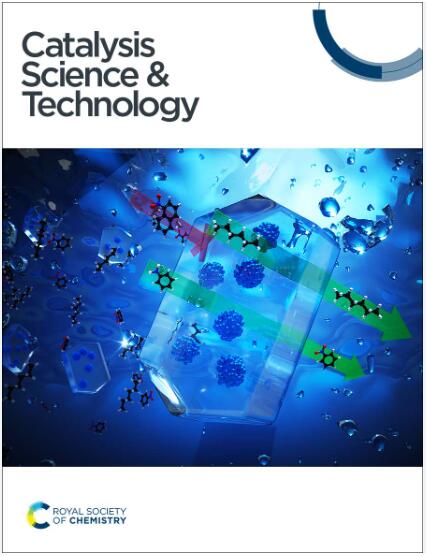铑之谜:竞争性β-氢化物与β-氟化物消除的计算见解†
IF 4.4
3区 化学
Q2 CHEMISTRY, PHYSICAL
引用次数: 0
摘要
金属催化的β消除是有机金属过程中常用的基本反应机制,包括著名的mizoraki - heck反应。虽然消除β-氢化物传统上一直是研究的重点,但消除β-杂原子,特别是消除β-氟化物,在当代有机方法中已显着增加。有趣的是,等电子的铑(I)和钯(II)对β-氢化物和β-氟化物的消除表现出相反的化学选择性。利用密度泛函理论(DFT)研究了铑(I)催化下β-氟化物优先于β-氢化物消除的原因。我们的模型表明,动力学偏好是经历β-氢化物消除,但观察到的化学选择性由于反应的可逆性而产生。另外的模型表明,在所采用的反应条件下,β-氢化物消除的可逆性使Curtin-Hammett情景能够解释实验观察到的对映体选择性。本文章由计算机程序翻译,如有差异,请以英文原文为准。
The rhodium riddle: computational insights into competitive β-hydride vs. β-fluoride elimination†
Metal-catalyzed β-eliminations are elementary reaction mechanisms commonly leveraged in organometallic processes, including the renowned Mizoroki–Heck reaction. Although β-hydride elimination has traditionally been the focus of study, β-heteroatom elimination, in particular β-fluoride elimination, has seen a significant rise in contemporary organic methodologies. Intriguingly, rhodium(i) and palladium(ii), which are isoelectronic, display opposite chemoselectivity for β-hydride vs. β-fluoride elimination. We investigated the origin of preferential β-fluoride over β-hydride elimination under rhodium(i) catalysis using density functional theory (DFT) calculations. Our modelling indicates that the kinetic preference is to undergo β-hydride elimination, but the observed chemoselectivity arises due to the reversible nature of the reaction. Additional modelling reveals that a Curtin–Hammett scenario enabled by reversibility of β-hydride elimination under the employed reaction conditions accounts for the enantioselectivity observed experimentally.
求助全文
通过发布文献求助,成功后即可免费获取论文全文。
去求助
来源期刊

Catalysis Science & Technology
CHEMISTRY, PHYSICAL-
CiteScore
8.70
自引率
6.00%
发文量
587
审稿时长
1.5 months
期刊介绍:
A multidisciplinary journal focusing on cutting edge research across all fundamental science and technological aspects of catalysis.
Editor-in-chief: Bert Weckhuysen
Impact factor: 5.0
Time to first decision (peer reviewed only): 31 days
 求助内容:
求助内容: 应助结果提醒方式:
应助结果提醒方式:


